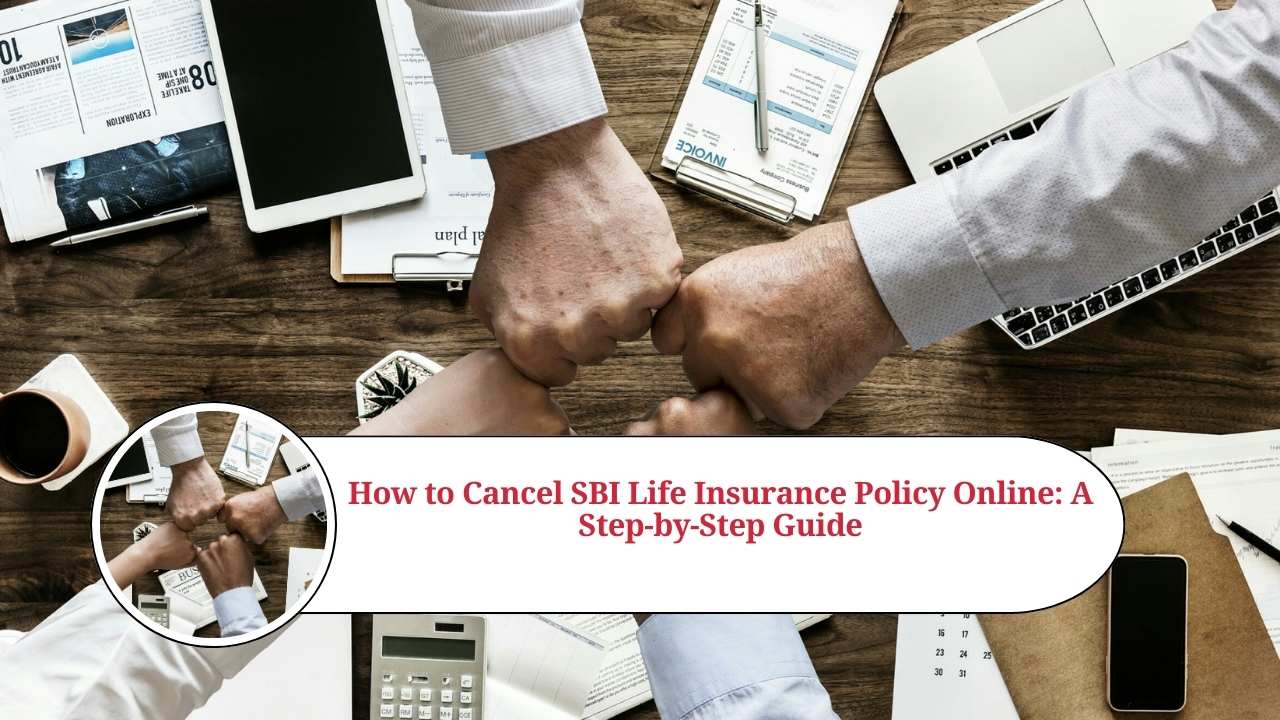

Finance
How Do I Sell Life Insurance?
Modified: December 30, 2023
Learn how to sell life insurance and boost your finance career. Get expert tips and strategies to succeed in the insurance industry.
(Many of the links in this article redirect to a specific reviewed product. Your purchase of these products through affiliate links helps to generate commission for LiveWell, at no extra cost. Learn more)
Table of Contents
- Introduction
- Step 1: Obtain the necessary licenses and certifications
- Step 2: Research and understand the types of life insurance policies
- Step 3: Develop your knowledge and expertise in life insurance
- Step 4: Identify and understand your target market
- Step 5: Build a strong network and referrals
- Step 6: Use effective marketing and advertising strategies
- Step 7: Conduct thorough client assessments and needs analysis
- Step 8: Present and explain life insurance options to clients
- Step 9: Overcome objections and address client concerns
- Step 10: Close the sale and provide excellent customer service
- Conclusion
Introduction
Welcome to the world of selling life insurance! Being a life insurance agent can be a rewarding and fulfilling career, as it allows you to provide financial protection and peace of mind to individuals and families. Whether you are new to the field or looking to improve your sales strategies, this comprehensive guide will help you navigate the process of selling life insurance effectively.
Life insurance is a crucial financial product that offers coverage in the event of an individual’s death. It serves as a safety net for loved ones, ensuring that they are financially supported if the unexpected occurs. As a life insurance agent, your role is to educate clients about the importance of this protection and assist them in selecting the right policies to meet their needs.
However, selling life insurance requires more than just convincing people to buy a policy. It involves understanding the nuances of different policies, building trust with clients, and effectively communicating complex information. This guide will provide you with step-by-step instructions on how to sell life insurance successfully.
From obtaining the necessary licenses to developing your expertise in the field, identifying your target market, and utilizing effective marketing strategies, you will learn the essential skills required to excel as a life insurance agent. Furthermore, we will explore the art of conducting client assessments, addressing objections, and closing the sale with confidence.
In addition, this guide emphasizes the importance of providing excellent customer service throughout the entire sales process. Building strong relationships and delivering on promises is essential to not only retain clients but also generate referrals, which can boost your success as a life insurance agent.
Whether you are a seasoned professional or just starting your career in the insurance industry, this guide will be a valuable resource to help you sell life insurance with confidence and effectiveness. So, let’s dive in and unlock the secrets to becoming a successful life insurance agent!
Step 1: Obtain the necessary licenses and certifications
Before you can sell life insurance, you must adhere to the legal requirements set by your jurisdiction. This typically involves obtaining the necessary licenses and certifications. The exact requirements vary depending on your location, so it’s important to research and understand the specific regulations in your area.
To begin, you’ll need to complete pre-licensing education courses. These courses provide the foundational knowledge and understanding of the insurance industry, including the different types of life insurance policies, underwriting processes, and legal and ethical considerations. Check with your local insurance regulatory body for approved courses and providers.
Once you’ve completed the required education, you’ll need to pass the licensing exam. The exam assesses your knowledge of insurance principles, practices, and regulations. It’s crucial to study and prepare thoroughly to increase your chances of passing the exam on your first attempt. Many resources, such as textbooks, online courses, and practice tests, are available to help you prepare.
After passing the licensing exam, you’ll need to submit an application and any required documentation to your local insurance regulatory body. This application typically includes background checks, fingerprinting, and financial history disclosures. It’s essential to ensure that your application is complete and accurate to avoid any delays or issues in obtaining your license.
Once you receive your license, keep in mind that it may require renewal periodically. Familiarize yourself with the renewal process and any continuing education requirements to maintain your license and stay up-to-date with industry developments.
In addition to obtaining the necessary licenses, consider pursuing professional certifications. While certifications are not always mandatory, they can enhance your credibility and demonstrate your commitment to professional development. The most common certification for life insurance agents is the Certified Life Underwriter (CLU) designation, which signifies expertise in life insurance planning and estate strategies.
By obtaining the necessary licenses and certifications, you demonstrate your competence and commitment to adhering to industry regulations. This builds trust with clients and sets you apart from unlicensed individuals in the market. Remember to stay informed about any changes or updates in licensing requirements to ensure you are always operating within the legal framework.
Step 2: Research and understand the types of life insurance policies
To effectively sell life insurance, it is crucial to have a deep understanding of the different types of policies available. Each type of life insurance offers unique features and benefits, catering to different needs and preferences. By familiarizing yourself with these options, you can guide clients in selecting the most suitable coverage for their specific circumstances.
There are three main types of life insurance policies: term life insurance, whole life insurance, and universal life insurance. Let’s take a closer look at each:
- Term Life Insurance: Term life insurance provides coverage for a specific period, typically 10, 20, or 30 years. This type of policy offers a death benefit to the beneficiaries if the insured passes away during the term. Term life insurance is generally more affordable than other types, making it an attractive option for individuals seeking temporary coverage or those on a tight budget.
- Whole Life Insurance: Whole life insurance provides lifelong coverage, as long as the premiums are paid. Along with a death benefit, this policy also includes a cash value component that grows over time. The cash value can be accessed through loans or withdrawals, providing a potential source of funds for emergencies or retirement planning. Whole life insurance offers stability and guarantees, making it an appealing choice for individuals looking for long-term protection combined with an investment component.
- Universal Life Insurance: Universal life insurance combines a death benefit with a flexible savings component. It offers policyholders the ability to adjust the amount and timing of premiums, as well as the death benefit, within certain limits. Universal life insurance provides greater flexibility than whole life insurance, allowing individuals to customize their coverage to suit their changing needs and financial goals.
It’s important to note that within each type of policy, there may be variations and additional options available. For example, term life insurance can include features such as convertible or renewable policies. Whole life insurance may have options like participating or non-participating policies. Universal life insurance often offers riders that provide extra coverage or benefits.
To effectively sell life insurance, invest time in conducting in-depth research on these policy types. Understand the features, benefits, and limitations of each. Consider hypothetical scenarios and determine which types of policies are most suitable for different client demographics and economic situations. This knowledge will enable you to provide personalized recommendations to clients and address their specific needs and concerns.
By thoroughly understanding the various life insurance policies available, you position yourself as a knowledgeable advisor and can offer valuable guidance to clients. This expertise will instill confidence in your clients and significantly increase your chances of closing sales successfully.
Step 3: Develop your knowledge and expertise in life insurance
As a life insurance agent, your success depends on your knowledge and expertise in the field. It’s essential to continuously develop and expand your understanding of life insurance to effectively serve your clients. By deepening your knowledge and staying up-to-date with industry trends and changes, you can position yourself as a trusted advisor and build credibility with potential clients.
Here are some strategies to help you develop your knowledge and expertise:
- Educational Resources: Take advantage of educational resources available to you, such as books, online courses, webinars, and industry publications. Stay informed about the latest advancements and research in life insurance. Seek out reputable sources that provide unbiased and up-to-date information to enhance your understanding of industry best practices.
- Continuing Education: Participate in continuing education programs to expand your knowledge and stay current with changes in the industry. Many professional organizations and insurance agencies offer courses and workshops specifically tailored for life insurance agents. These programs can provide valuable insights into emerging market trends, new products, and regulatory updates.
- Networking: Surround yourself with professionals who have expertise in life insurance. Join industry associations and attend conferences, seminars, and networking events to connect with colleagues and learn from their experiences. Engage in discussions and share knowledge to broaden your perspective and gain valuable insights.
- Mentorship: Seek out experienced mentors who can guide and advise you in your career. A mentor can share their knowledge and provide practical advice to help you navigate challenges and make informed decisions. Their expertise and guidance can significantly accelerate your learning and professional growth.
- Sales Training: Invest in sales training programs specific to life insurance to enhance your selling skills. These programs focus on techniques and strategies to effectively communicate the value of life insurance, overcome objections, and close sales. Continuous improvement in your sales skills will enhance your ability to connect with potential clients and convert leads into customers.
Remember, developing expertise in life insurance is an ongoing process. The industry is constantly evolving, so it’s important to commit to lifelong learning. Stay curious, seek knowledge proactively, and embrace opportunities for professional growth.
By continuously developing your knowledge and expertise in life insurance, you not only enhance your own capabilities but also provide a higher level of service to your clients. Demonstrating a deep understanding of the products and industry instills confidence in potential customers and increases the likelihood of successful sales conversions.
Step 4: Identify and understand your target market
Identifying and understanding your target market is a crucial step in selling life insurance. By narrowing down your focus and tailoring your approach to specific demographics, you can optimize your marketing efforts and effectively connect with potential clients who are more likely to be interested in your services.
Here are some key strategies to help you identify and understand your target market:
- Research: Conduct market research to gain insights into different segments of the population and their life insurance needs. Analyze demographic data, such as age, income level, occupation, and family status, to identify groups that are more likely to require or be interested in life insurance coverage. Understanding the unique needs and challenges of different demographics will allow you to tailor your messaging and approach accordingly.
- Customer Profiling: Create customer profiles to develop a clear understanding of your ideal client. Consider factors such as their lifestyle, financial goals, risk tolerance, and insurance preferences. This will help you refine your marketing messages and target your efforts to reach individuals who align with your ideal client profile.
- Segmentation: Once you’ve identified broad demographic groups, further segment your target market based on specific characteristics or needs. For example, you may choose to focus on young families looking to protect their loved ones or retirees seeking to create an estate plan. By segmenting your target market, you can customize your marketing materials and offers to address their specific concerns and motivations.
- Competitor Analysis: Conduct a competitive analysis to understand how your competitors are targeting specific market segments. Assess their messaging, value propositions, and the types of life insurance products they offer. This insight can help you differentiate yourself and identify gaps in the market that you can capitalize on.
- Referrals and Existing Networks: Leverage your existing networks and cultivate relationships to generate referrals. Connect with professionals such as financial advisors, estate planners, and attorneys who may have clients in need of life insurance. Building strategic partnerships can expand your reach and provide access to potential clients who are more likely to require your services.
Understanding your target market is not a one-time effort; it requires ongoing evaluation and adjustment. As you gain experience and gather data, continuously reassess your target market to ensure that your marketing approach remains relevant and effective.
By identifying and understanding your target market, you can focus your marketing efforts on reaching individuals who are more likely to be interested in life insurance. This targeted approach increases the efficiency of your marketing campaigns, saving you time and resources while maximizing your potential for success.
Step 5: Build a strong network and referrals
Building a strong network and generating referrals is a powerful way to grow your life insurance business. By leveraging relationships and word-of-mouth marketing, you can expand your reach and connect with potential clients who are more likely to trust your services. Here are some strategies to help you build a robust network and generate referrals:
- Cultivate Relationships: Develop genuine relationships with individuals who can refer potential clients to you. This includes professionals such as financial advisors, accountants, attorneys, and real estate agents. Attend industry events, join networking groups, and participate in community organizations to connect with professionals who serve similar client bases.
- Provide Value: Position yourself as a valuable resource and trusted advisor within your network. Share educational content, industry insights, and relevant updates to demonstrate your expertise and commitment to helping others. By consistently proving your value, you build trust and deepen the relationships with your network connections.
- Ask for Referrals: Don’t be afraid to ask for referrals from satisfied clients and networking contacts. If you have provided value and have built strong relationships, individuals will be more likely to refer their friends, family, and colleagues to you. Educate your clients and network connections about the benefits of life insurance and explain the importance of referrals in helping you grow your business.
- Offer Incentives: Consider implementing a referral program where you provide incentives to individuals who refer clients to you. This can be in the form of cash rewards, discounts on premiums, or other incentives that align with your business model and compliance regulations. Incentives can motivate and encourage individuals to actively refer potential clients to you.
- Seek Testimonials: Encourage satisfied clients to provide testimonials or reviews that highlight their positive experiences working with you. These testimonials can be featured on your website, social media platforms, and marketing materials. Positive reviews and testimonials serve as social proof and can inspire confidence in potential clients.
- Stay Connected: Regularly engage with your network by keeping in touch through emails, newsletters, and social media. Share relevant information, industry updates, and success stories to stay top-of-mind and reinforce your expertise. By nurturing these relationships, you increase the likelihood of receiving referrals and generating new business.
Building a strong network and generating referrals requires time, effort, and consistency. Remember, trust and credibility are essential in this process. Focus on providing exceptional service, delivering on your promises, and nurturing genuine relationships. Over time, your network will become a valuable source of high-quality referrals that can significantly contribute to the growth of your life insurance business.
Step 6: Use effective marketing and advertising strategies
Implementing effective marketing and advertising strategies is crucial in reaching and attracting potential clients for your life insurance business. By utilizing the right techniques, you can effectively communicate the value of life insurance and generate leads. Here are some strategies to help you promote your services:
- Define Your Unique Value Proposition: Clearly articulate what sets you apart from other life insurance agents. Identify your unique selling points and highlight the benefits of working with you. This will help differentiate your services and attract potential clients who align with your value proposition.
- Develop a Professional Website: Invest in a professional website that showcases your expertise, services, and testimonials. Make sure your website is visually appealing, easy to navigate, and mobile-friendly. Provide informative and engaging content to educate visitors about the importance of life insurance and encourage them to contact you for more information.
- Utilize Search Engine Optimization (SEO): Optimize your website and online content with relevant keywords and meta tags to improve your visibility in search engine results. By appearing higher in search rankings, you increase the chances of attracting organic traffic to your website and generating potential leads.
- Use Social Media Marketing: Leverage social media platforms such as Facebook, LinkedIn, and Twitter to engage with your target audience. Share educational and informative content, industry insights, and success stories to build credibility and foster meaningful connections. Engage in conversations, respond to comments, and actively participate in relevant groups and discussions to further expand your reach.
- Content Marketing: Create a content marketing strategy to establish yourself as a knowledgeable resource in the industry. Develop blog posts, videos, infographics, and eBooks that provide valuable information about life insurance. Share this content on your website, social media platforms, and through email newsletters to attract and educate potential clients.
- Host Webinars or Workshops: Offer educational webinars or workshops that provide insights into the importance of life insurance and guide participants through the process of selecting the right coverage. This positions you as an expert in the field and allows you to engage with potential clients in a more interactive and informative manner.
- Collaborate with Other Professionals: Form strategic partnerships with professionals in related industries, such as financial advisors or estate planners. Explore opportunities for joint marketing initiatives, guest blogging, or targeted referral programs. Collaboration can expand your reach and attract potential clients who may be seeking comprehensive financial planning services.
- Track and Analyze Results: Utilize analytics tools to monitor the performance of your marketing campaigns. Track website traffic, social media engagement, and lead generation metrics to measure the effectiveness of your strategies. Analyze the data to identify areas of improvement and optimize your marketing efforts accordingly.
Remember that effective marketing and advertising require consistent effort and experimentation. Not every strategy will yield immediate results, so be patient and adapt your approach based on the insights you gather along the way. By implementing these strategies, you can increase your visibility, attract potential clients, and grow your life insurance business.
Step 7: Conduct thorough client assessments and needs analysis
Conducting thorough client assessments and needs analysis is a critical step in selling life insurance. It involves understanding the unique circumstances and financial goals of each client to tailor your recommendations and provide them with the most appropriate coverage. By taking the time to gather information and analyze their needs, you can create personalized solutions that address their specific concerns. Here’s how you can effectively conduct client assessments and needs analysis:
- Establish a Relationship: Start by building rapport and establishing a trusting relationship with your clients. Create a comfortable and open environment where they feel comfortable discussing their financial situation and concerns. Listen attentively, show empathy, and assure them that you are there to help.
- Gather Relevant Information: Collect comprehensive information about your clients, including their age, marital status, income, dependents, and financial obligations. Ask about their short-term and long-term goals, such as retirement planning, education funding, or wealth preservation. Also, inquire about any existing life insurance policies or coverage they may already have.
- Assess Financial Needs and Risks: Analyze your client’s financial needs and potential risks. Consider factors such as income replacement, debt obligation coverage, final expenses, mortgage protection, and estate planning. Evaluate their risk tolerance level and discuss their comfort with different policy options, such as term life insurance, whole life insurance, or universal life insurance.
- Evaluate Health and Lifestyle Factors: Inquire about your client’s current health condition, medical history, and lifestyle factors that may affect their insurability. Understand if they have any pre-existing medical conditions, engage in dangerous hobbies or occupations, or have a family history of significant health issues. This information will help in determining appropriate coverage and pricing options.
- Analyze Budget and Affordability: Discuss your client’s budgetary constraints and determine the amount they can comfortably afford for life insurance premiums. Consider their current income, expenses, and financial obligations to recommend coverage that aligns with their affordability. Explain different payment options, such as monthly, quarterly, or annual premiums, and help them choose the most suitable option.
- Educate and Present Solutions: Once you have gathered all the necessary information, educate your clients about the different life insurance options available to them. Clearly explain the features, benefits, and limitations of each policy type and present them with customized solutions that address their specific needs and goals. Illustrate how the recommended coverage aligns with their financial objectives and offers the necessary protection for their loved ones.
- Address Questions and Concerns: Encourage your clients to ask questions and address any concerns they may have. Clarify any misconceptions or misunderstandings about life insurance and provide clear and transparent answers. Ensure that they fully understand the policy terms, conditions, and potential implications.
Conducting thorough client assessments and needs analysis allows you to truly understand your clients’ objectives, concerns, and financial situation. This comprehensive understanding enables you to provide tailored solutions and recommendations that meet their specific needs. By taking this personalized approach, you build trust, demonstrate your expertise, and significantly improve the chances of closing sales successfully.
Step 8: Present and explain life insurance options to clients
Once you have conducted a thorough client assessment and needs analysis, it’s time to present and explain the life insurance options to your clients. This step is crucial in helping them understand the different policies available, their features, and how they align with their specific needs and goals. Here’s how you can effectively present and explain life insurance options to your clients:
- Start with a Summary: Begin by providing an overview of the different types of life insurance policies available, including term life insurance, whole life insurance, and universal life insurance. Give a brief explanation of each option to give your clients a general understanding before diving into the details.
- Explain Policy Features: Take the time to explain the features of each policy type, such as the length of coverage for term life insurance, the cash value component for whole life insurance, and the flexibility of premium payments for universal life insurance. Describe how these features can benefit your clients and address their specific needs.
- Discuss Premiums and Costs: Explain how premiums are calculated for each policy type and the factors that influence the pricing, such as age, health, and coverage amount. Discuss the affordability of each option and how it fits within your client’s budget. Emphasize the long-term value and protection that life insurance provides, even if it requires a financial commitment in the present.
- Illustrate Examples: Use real-life examples and scenarios to help your clients visualize how each policy can work for them. For instance, demonstrate how term life insurance can provide income replacement for a young family, while whole life insurance can serve as a vehicle for long-term wealth accumulation and estate planning.
- Address Beneficiary Designations: Discuss the importance of naming beneficiaries and the flexibility that life insurance policies offer in designating beneficiaries. Explain how the death benefit can be used to support loved ones, pay off debts, or fund education expenses. Highlight the potential tax advantages associated with life insurance proceeds for beneficiaries.
- Consider Riders and Additional Options: Discuss any available riders or additional options that can enhance the policy coverage. Examples may include accelerated death benefit rider, accidental death benefit rider, or long-term care rider. Explain how these optional features can provide additional protection or flexibility, depending on your client’s needs and preferences.
- Address Potential Concerns and FAQs: Be proactive in addressing common concerns and frequently asked questions about life insurance. Address topics such as policy cancellations, premium affordability, medical underwriting, and the process of submitting a claim. Provide clear and transparent answers to ensure your clients feel confident and informed in their decision-making.
- Provide Comparison and Recommendations: Summarize the different options, highlighting the key features and benefits of each policy type. Based on your client’s needs, goals, and budget, recommend the most suitable coverage options. Provide a clear rationale for your recommendations, emphasizing how the suggested policies align with their unique circumstances.
Throughout the presentation, maintain an open and consultative approach. Encourage your clients to ask questions and clarify any doubts they may have. Tailor your explanations to their level of understanding and ensure they feel comfortable with the information provided. By effectively presenting and explaining the life insurance options, you empower your clients to make informed decisions that best serve their financial future and protect their loved ones.
Step 9: Overcome objections and address client concerns
When selling life insurance, it is common for potential clients to have objections and concerns. These objections can stem from various factors, such as cost, the perception of not needing coverage, or skepticism about the benefits. As a life insurance agent, it’s essential to address these objections effectively and alleviate any concerns your clients may have. Here are some strategies to help overcome objections and address client concerns:
- Listen Attentively: Allow your clients to express their objections and concerns fully. Listen attentively to understand their perspective without interrupting. This demonstrates respect and empathy, and also provides you with valuable insights into their specific objections.
- Clarify Misunderstandings: Many objections arise from misunderstandings or misconceptions. Take the time to clarify any misconceptions and provide accurate information. Educate your clients about the value of life insurance, the importance of coverage, and the benefits it provides to their loved ones in the event of their passing.
- Provide Evidence and Statistics: Support your claims and statements with credible evidence and statistics. Share relevant data and research about the financial risks individuals and families face without life insurance. Use factual information to demonstrate the real-life benefits and the peace of mind that life insurance provides.
- Customize Solutions: Tailor your recommendations to address your client’s specific concerns. If cost is a primary objection, explore flexible coverage options, such as term life insurance, which typically offers more affordable premiums. If there are doubts about the necessity of coverage, highlight real-life examples and stories that emphasize the significant financial impact on families without life insurance.
- Address Health Concerns: If health-related concerns arise, emphasize that life insurance is still available to individuals with health conditions. Explain how underwriting processes work and that there are policies and insurers that cater to various health profiles. Provide information about options like guaranteed issue life insurance or simplified issue policies that may require less stringent medical evaluations.
- Highlight Long-Term Benefits: Emphasize the long-term benefits of life insurance beyond the immediate cost. Discuss the potential growth of cash value in permanent policies, the financial protection it provides to loved ones, and the ability to borrow against the policy’s cash value for emergencies or other financial needs.
- Share Testimonials and Success Stories: Use testimonials or share success stories from satisfied clients who have benefitted from life insurance. Hearing how others have protected their families and achieved peace of mind can alleviate concerns and build trust. Personal stories create relatability and help potential clients envision the value of life insurance for themselves.
- Offer Policy Riders or Flexibility: If specific concerns arise, explore policy riders or additional options that can address those concerns directly. For example, if a potential client is worried about covering mortgage payments in the event of death, discuss the option of adding a mortgage protection rider to the policy.
- Stay Calm and Professional: Respond to objections and concerns in a calm and professional manner, even if the client becomes defensive or aggressive. Maintain a positive and empathetic demeanor, ensuring that your client feels heard and respected throughout the conversation.
Remember, effectively addressing objections and client concerns requires patience, empathy, and the ability to communicate the value of life insurance. By addressing objections head-on, providing accurate information, and demonstrating empathy, you can help potential clients overcome their hesitations and make informed decisions about life insurance coverage.
Step 10: Close the sale and provide excellent customer service
After addressing objections and concerns, it’s time to close the sale and provide excellent customer service to your clients. This final step is crucial in ensuring customer satisfaction and building long-term relationships. Here are some strategies to help you close the sale and deliver exceptional customer service:
- Confirm Understanding and Agreement: Confirm that your clients understand the coverage options presented, their benefits, and the associated costs. Ensure that they agree with the chosen policy and are comfortable moving forward with the purchase.
- Assist with Application and Paperwork: Guide your clients through the application and paperwork process. Offer assistance in completing the necessary forms, explain any required documentation, and ensure that all information is accurate and complete. Streamline the application process as much as possible to minimize any potential frustrations.
- Provide Transparent and Clear Information: Clearly explain the terms of the policy, including coverage limits, policy duration, premiums, and any additional riders or options. Address any remaining questions or concerns, and ensure that your clients have a complete understanding of their chosen coverage.
- Offer Multiple Payment Options: Provide your clients with flexible payment options that suit their preferences and budget. Consider offering options for monthly, quarterly, semi-annual, or annual premium payments. Explain any discounts or incentives available for certain payment frequencies.
- Set Realistic Expectations: Manage your client’s expectations regarding the underwriting process, timeframes for policy issuance, and any potential medical examinations or requirements. Transparently communicate the necessary steps and estimated timelines to avoid surprises or frustrations later on.
- Ensure Prompt Policy Issuance: Expedite the policy issuance process as much as possible. Follow up with any necessary parties, such as underwriters or insurers, to ensure a smooth and efficient process. Keep your clients informed of the progress and promptly address any delays or issues that may arise.
- Reinforce the Value of the Coverage: Remind your clients of the value they are receiving by highlighting the financial security and peace of mind that their chosen life insurance coverage provides. Reiterate the importance of protecting their loved ones and the potential impact on their family’s future financial well-being.
- Provide Ongoing Customer Support: Maintain regular communication with your clients after the sale. Offer assistance with policy updates, beneficiary changes, or any other insurance-related inquiries. Be responsive and accessible, ensuring that your clients know they can rely on you for ongoing support and guidance.
- Review Policies Periodically: Schedule regular policy reviews to reassess your client’s coverage needs. Proactively reach out to ensure their policies remain aligned with their changing circumstances, such as marital status, income, or dependent changes. This demonstrates your commitment to their long-term financial well-being.
- Exceed Expectations: Strive to go above and beyond to exceed your client’s expectations. Provide timely and accurate responses to inquiries. Demonstrate a personal touch by remembering important dates or milestones in their lives. Surprise them with educational resources, personalized recommendations, or relevant updates that add value to their relationship with you.
By effectively closing the sale and providing excellent customer service, you not only ensure your client’s satisfaction but also increase the likelihood of future business and referrals. Delivering a memorable experience and maintaining an ongoing relationship positions you as a trusted advisor and reinforces the value you bring as their life insurance agent.
Conclusion
Selling life insurance involves a combination of expertise, empathy, and effective communication. By following the steps outlined in this guide, you can navigate the process of selling life insurance more confidently and successfully.
From obtaining the necessary licenses and certifications to developing a deep understanding of different policy types, target markets, and effective marketing strategies, you can position yourself as a trusted advisor in the industry. By conducting thorough client assessments and needs analysis, presenting and explaining life insurance options, addressing objections and concerns, and ultimately closing the sale, you can provide valuable financial protection to individuals and families.
However, the journey does not end with the sale. Providing exceptional customer service is integral to building lasting relationships and maintaining client satisfaction. By going the extra mile, delivering on promises, and being accessible for ongoing support, you can solidify your reputation as a reliable and caring life insurance agent.
Remember, success in selling life insurance is not just about numbers and transactions. It is about making a difference in people’s lives by protecting their financial future and providing peace of mind. By consistently improving your knowledge, honing your sales skills, and putting your clients’ needs first, you can flourish in the dynamic and rewarding world of life insurance. Embrace the journey, continuously learn and adapt, and enjoy the fulfillment that comes from helping others safeguard their loved ones’ future.














